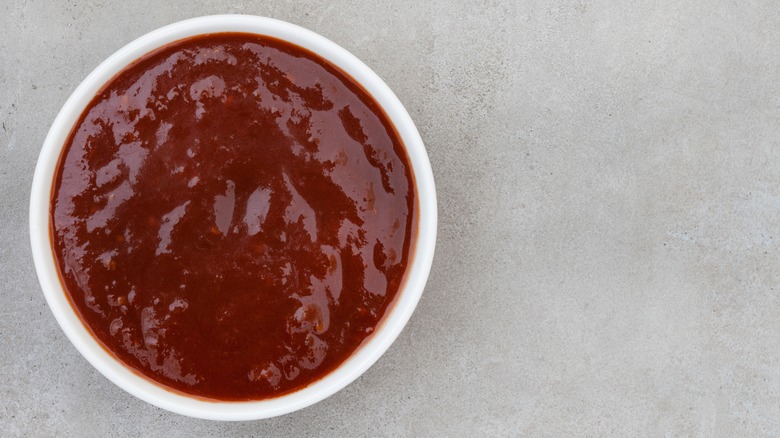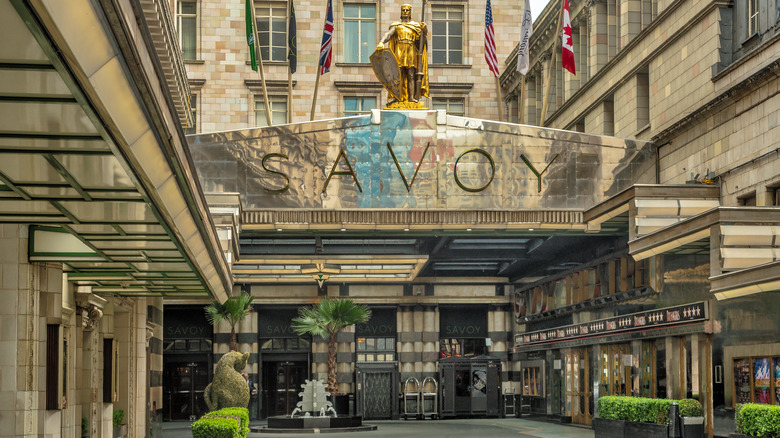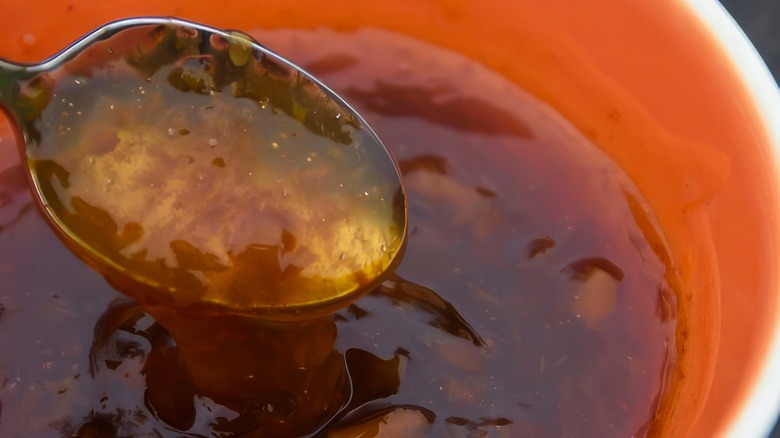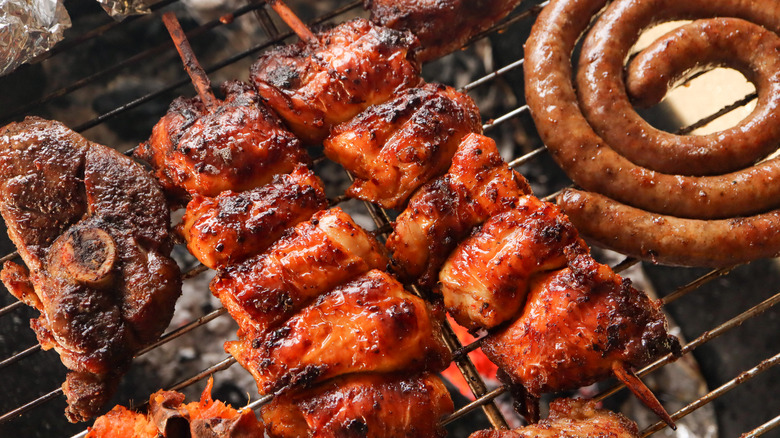What Is Monkey Gland Sauce And Where Does It Get Its Name?
No, it does not contain any monkey glands. That may come as a relief or a disappointment to you, depending on how adventurous of an eater you are. In reality, monkey gland sauce is a popular South African condiment found everywhere, from steakhouses to backyard cookouts. It can be doused on just about any meat you can think of, most often beef, although local meats such as ostrich, wildebeest, springbok, and kudu are worth mentioning as options.
Monkey gland sauce is a Frankensteinian mashup of popular condiments, with Worcestershire sauce, tomato sauce, vinegar, and South African-style chutney as the core elements. They all come together to form something that looks a bit like barbecue sauce — though slightly chunky — with a glossy finish that lends a mouthwatering shine to whatever you put it on. The flavor encompasses many tastes: sweet, tangy, spicy, and umami.
Monkey gland sauce is incredibly versatile and easy to make at home using pantry staples, but let's be honest, you want to know about the name. As it turns out, the probable origin is even crazier than you'd think.
Why is it called monkey gland sauce?
The origin of monkey gland sauce is a bit of a mystery. The most notable theory says that the condiment was born in the kitchen of London's famous Savoy Hotel sometime in the 1930s. As the story goes, the Savoy frequently hosted Dr. Serge Voronoff, a French surgeon of Russian birth, who developed the rather bold theory that impotent men could be cured if they had samples of monkey testicles grafted onto their own. He also believed that such transplants could cure senility and schizophrenia and prolong human life to as long as 140 years.
When dining at the Savoy, Dr. Voronoff was known to order a brandied steak that may have been a precursor to monkey gland sauce. The kitchen staff eventually took to calling the dish "monkey gland steak," in a nod to the doctor's experiments. It is said that one of the servers at the Savoy later moved to South Africa, bringing the name and the sauce with him.
A competing theory suggests the sauce was invented at the Carlton Hotel in Johannesburg. Legend has it that diners there were fond of covering their steaks in tomato sauce, chutney, and Worcestershire. This apparently offended the chefs, who viewed it as a low-brow move. They resolved to elevate the toppings by combining them into a single sauce — which proved to be a hit with diners — and naming it after Dr. Voronoff.
How to make monkey gland sauce
Some companies make bottled monkey gland sauce, some of which you can purchase online. However, monkey gland sauce is so dead simple that it's really worth making your own. Recipes may vary, but only slightly. The core ingredients stay the same. You'll start by sautéeing onions and garlic, to which you'll add Worcestershire sauce, vinegar, chutney, and tomato purée or ketchup. Some variations call for a bit of ginger, hot sauce, or port wine to add further depth.
All of these ingredients are pantry staples in South African homes, but there's one thing that international cooks probably won't have on hand: the chutney. There are countless varieties of chutney worldwide, particularly in Indian cuisine, but the South African version is unique. It typically uses peaches and apricots mixed with vinegar and chili powder, making it sweet, sour, and spicy. The most popular brand of South African chutney is called Mrs. Ball's (apt, considering Dr. Voronoff's interests). It's been in business for over a century and exports the product worldwide. If you can't find it in a store near you, you can always get it online.
How to use monkey gland sauce
Monkey gland sauce is wonderfully versatile. While it pairs nicely with any meat, it is most commonly used on top of steaks and hamburgers. It's also a popular dipping sauce for fries and onion rings. You're really free to experiment with it, so try it on whatever you like. Monkey gland sauce can also be used as a marinade, adding depth to meat before it hits the grill.
For an authentic South African experience, you should pair monkey gland sauce with meat prepared in the braai style. Braai is an Afrikaans word that refers to both a method of grilling and a social gathering. It's a Sunday tradition that unites family and friends for a communal meal. The key feature of a braai is the grill itself, which must be heated by wood or charcoal. If you use a gas grill, it's not a braai. The smoky flavor imparted by wood is an essential part of the experience. Once the food is served, the grill is left to burn like a campfire, serving as a centerpiece to the gathering.
Popular meats to serve at a braai include steak, chicken, lamb, wild game, and boerwors, a traditional South African sausage made from a blend of beef and pork. Boerwors is shaped in a large spiral and often sliced up and placed in a bun. Known as a boerwors roll or boerie, these are commonly topped with — you guessed it — monkey gland sauce.



